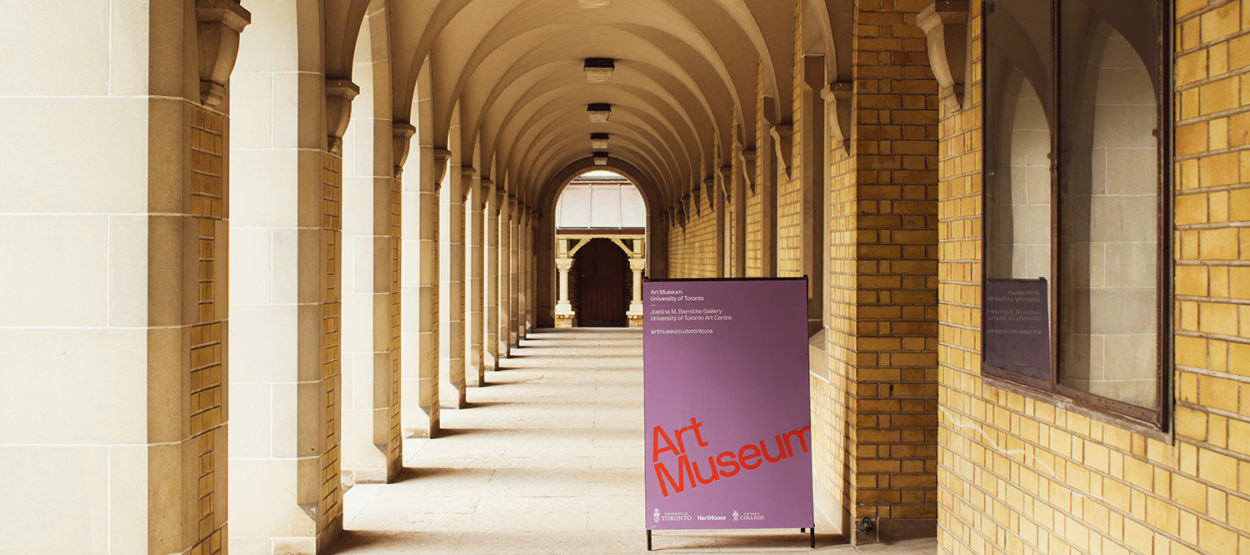The Art Museum at the University of Toronto is comprised of the University of Toronto Art Centre at University College (a Biennial site) and the Justina M. Barnicke Gallery at Hart House. Just a few steps apart, the two galleries were federated in 2014, working as one entity to produce a year-round schedule of exhibitions and programming focused on contemporary art.
The University of Toronto Art Centre was opened in 1996 and is housed in the Laidlaw Wing, a 1964 addition to the mid-nineteenth-century buildings of University College, which opened as a non-denominational institution of higher learning to men in 1859 and to women in 1884. In the nineteenth century, cows grazed in pastures behind the College. The building is designated as a national historic site; it was also home to the oldest LGBTQ student organization in Canada, the University of Toronto Homophile Association, which was founded in 1969.
The Justina M. Barnicke Gallery was opened in 1983; it manages the Hart House Permanent Art Collection, initiated in 1922, which focuses on acquiring works by living artists in Canada. Hart House occupies a heritage building that sits at the former site of McCaul’s Pond, which was created in the early 1860s by damming Taddle Creek, once a breeding ground for salmon. Hart House and University College are part of University of Toronto, which was originally founded in 1827 as King’s College, one of the first institutions of its kind in Canada. The University is built on lands that, for thousands of years, have been the traditional lands of the Huron-Wendat, the Petun First Nations, the Seneca, and the Mississaugas of the Credit First Nation, and continue to be home to many Indigenous people from across Turtle Island.
This Biennial site description was generated by the curatorial team, in consultation with our creative partners, to offer lesser-known facts and histories, and explore sites in relation to the changing shoreline.
This exhibition is a partnership with the Art Museum.

